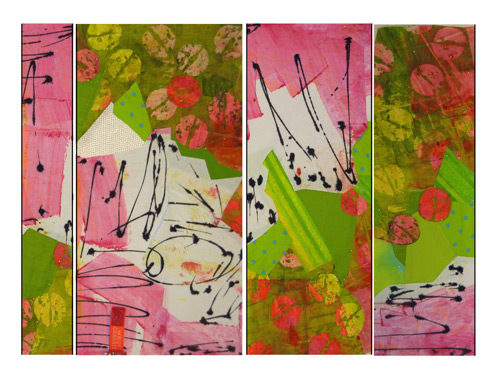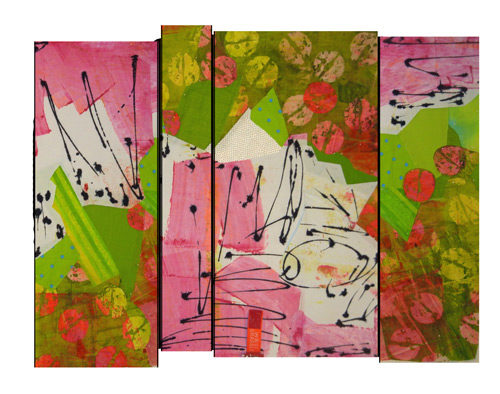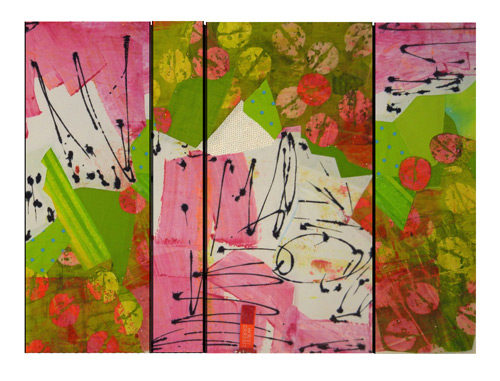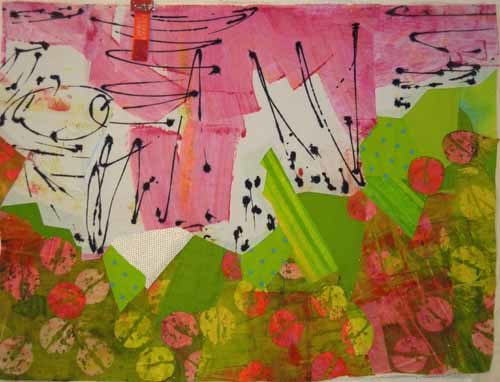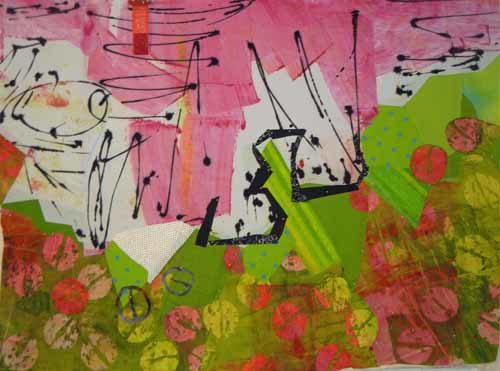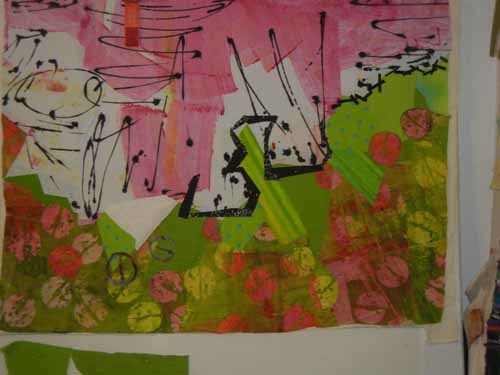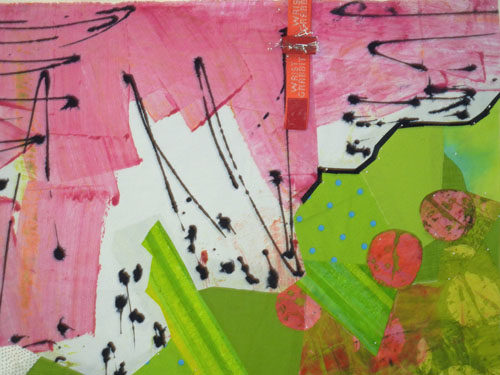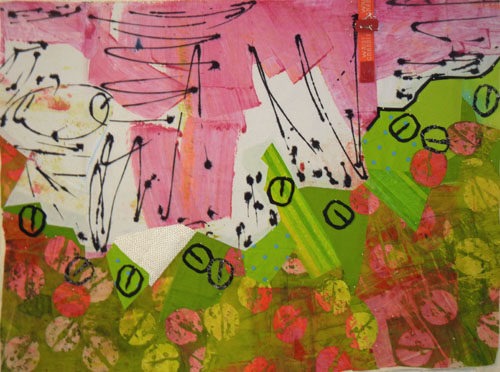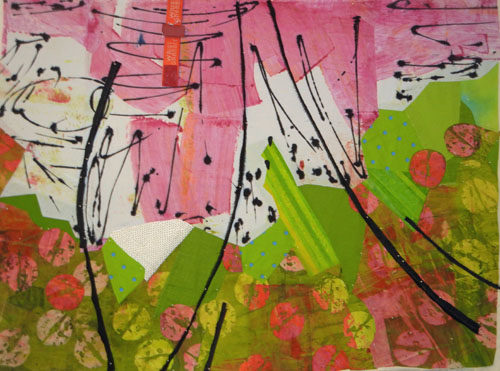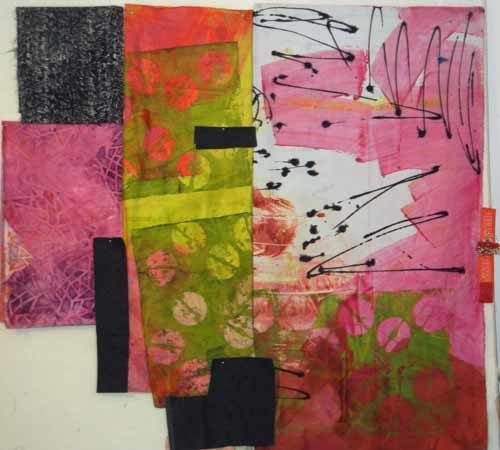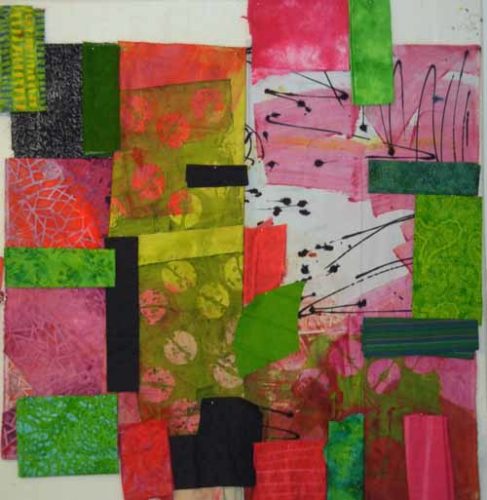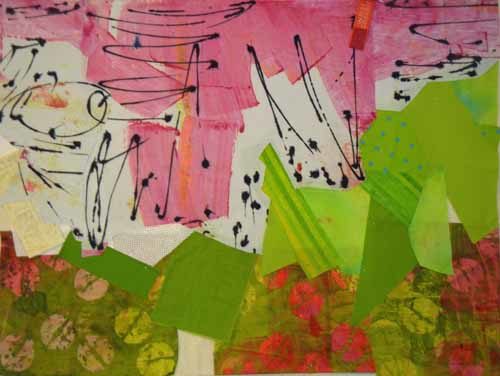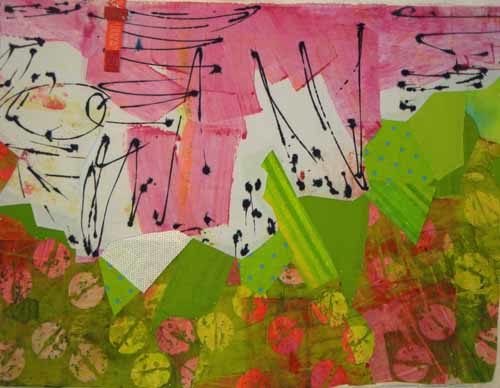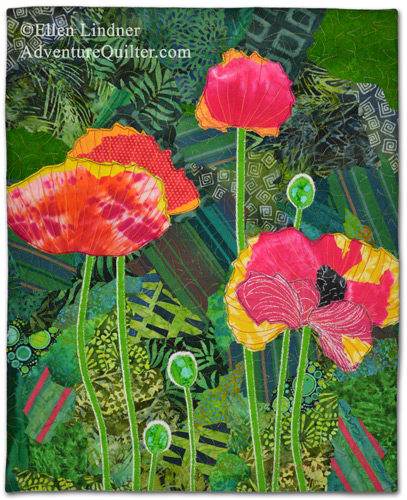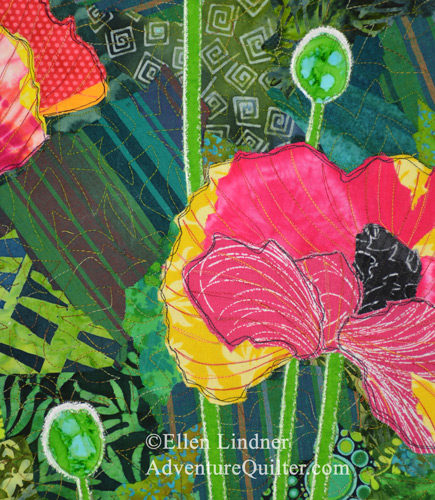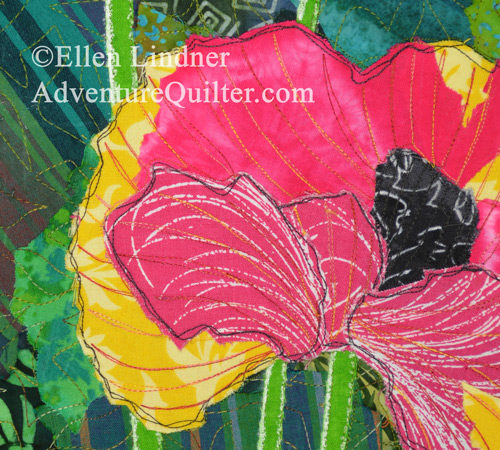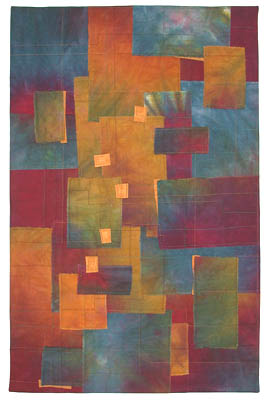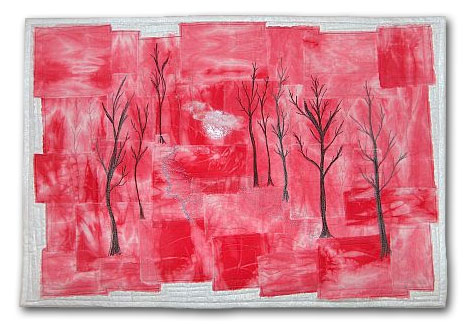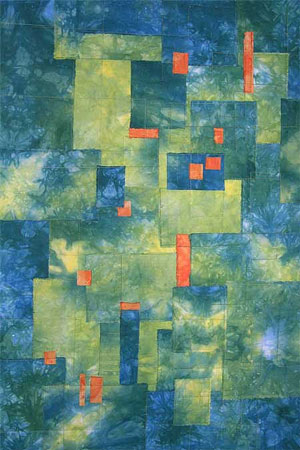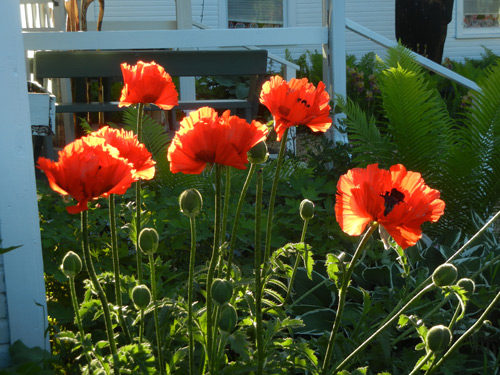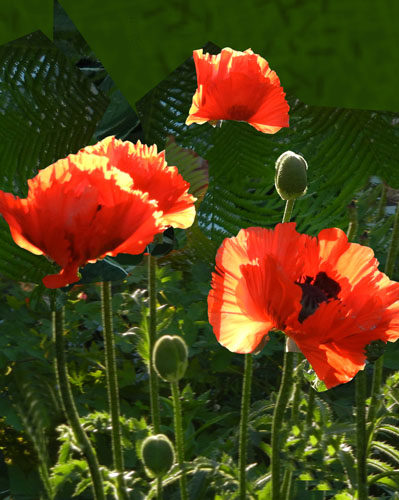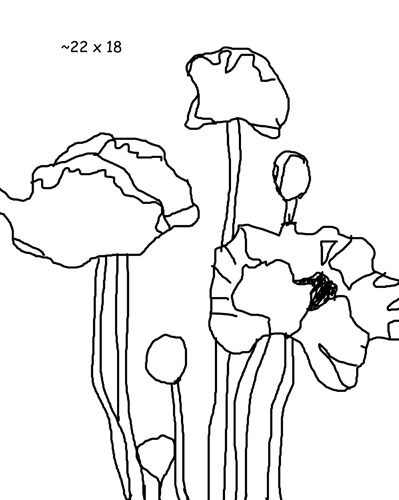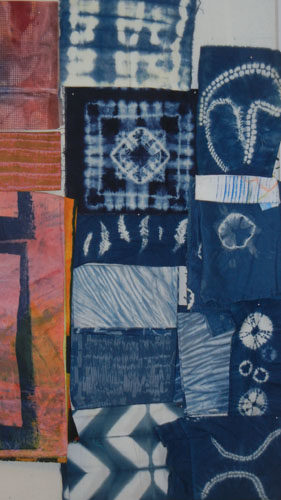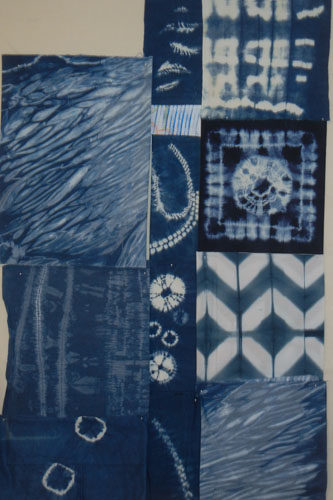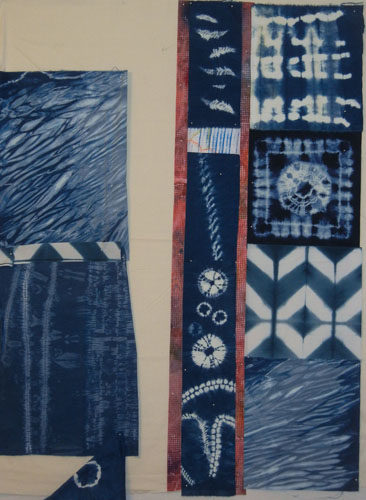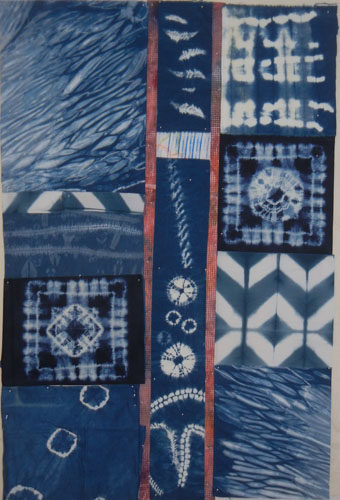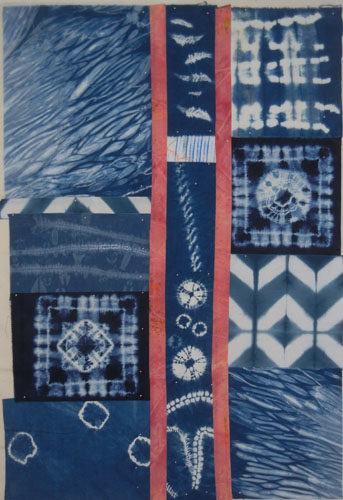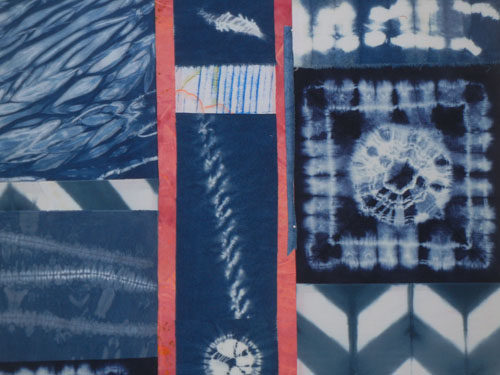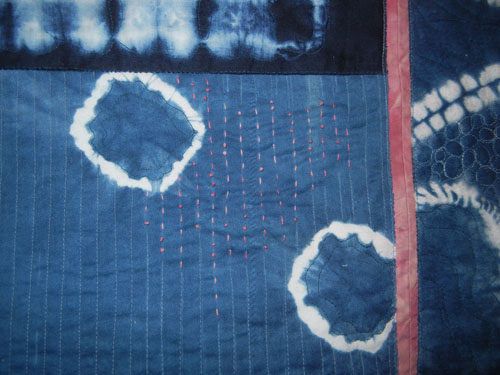You readers are really great! When I posted my quilt at this stage several of you had good suggestions about how I might improve it.
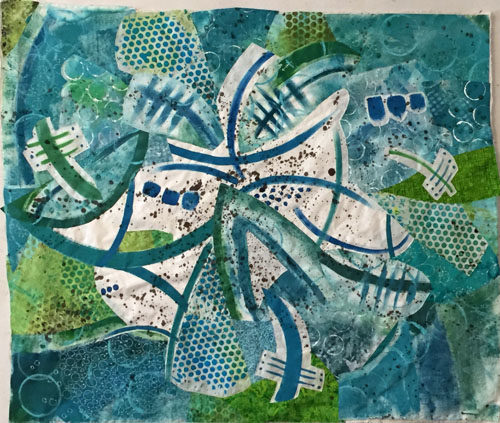
The most common suggestion was to add some orange back in. Something I had considered but rejected. Another tip was to break up the white and to extend the “splashing” out toward the edges more. Since I had mentally given this quilt a “7,” I knew it needed something and I decided to give these ideas a try.
First, I added some white “splashes” closer to the edges and put some of the orange stripes back. I also tapered the ends of many of the motifs.
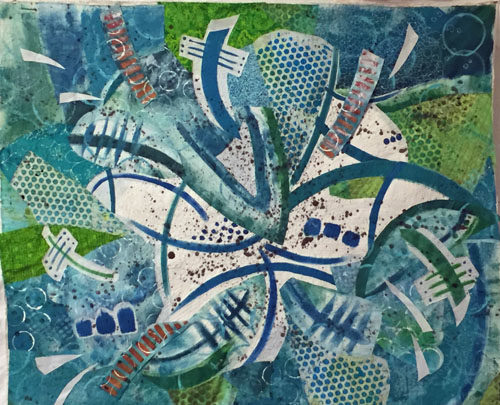
Clearly, the orange needed to be more dramatic. So, I tried a few little splashes, (which look red in this photo.) Yes! I could see that this would add the drama the quilt needed.
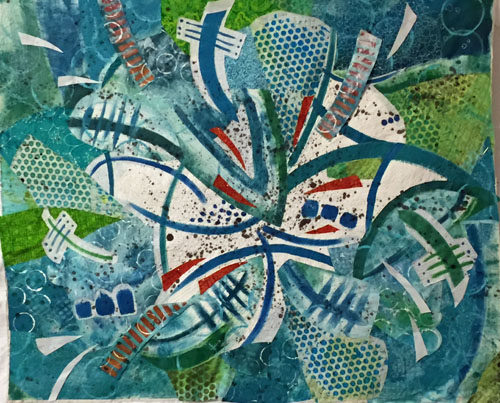
I added more.
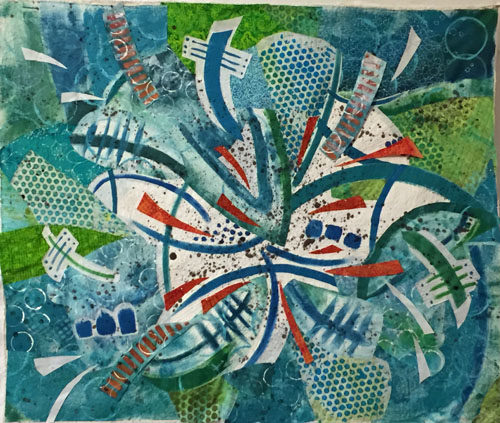
Yeah, that was working pretty well. My brain said, “Let’s add more!” And I obliged.
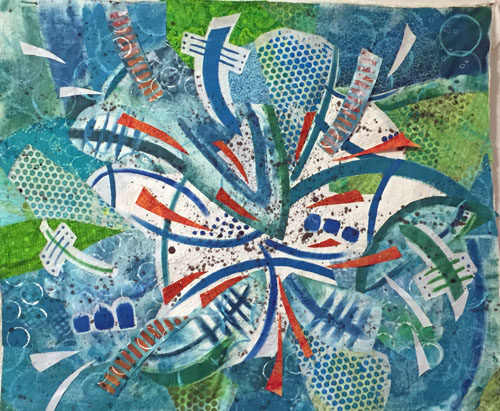
But, wait a second. This was beginning to look like I had added the kitchen sink! Some editing was needed. I removed the white splashes and auditioned changes to the orange stripes. (Below, those fabrics are folded, rather than cut, for audition purposes.)

And this is where I ended up. As you can see I completely removed the orange stripes.
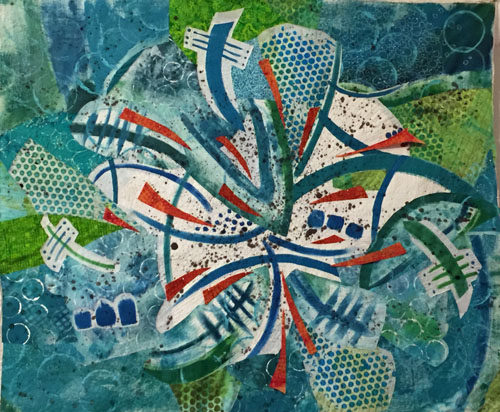
Have you heard the saying that goes, “If your composition is not working, remove your favorite thing?” I think that sort of applied here. At this point, I thought it was a solid 8.5 and I was quite happy with it. On to quilting.
(Did you remember that this piece is composed of painted fabric, some of which is stiff? That may be an issue for the quilting.)
Ellen Lindner

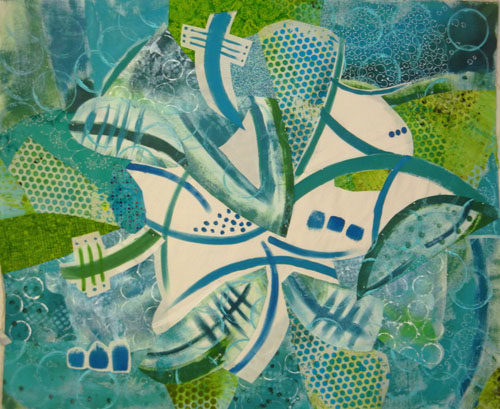
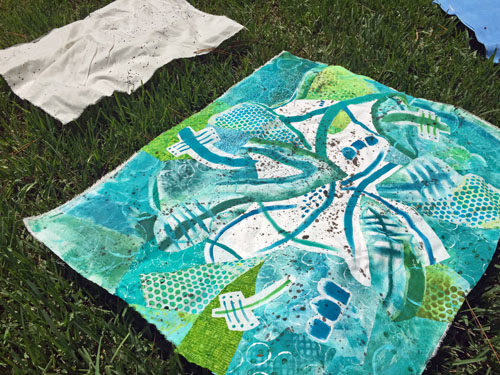
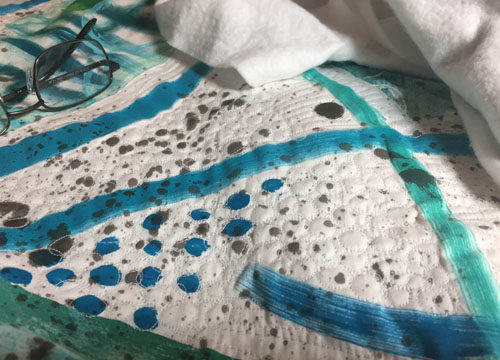
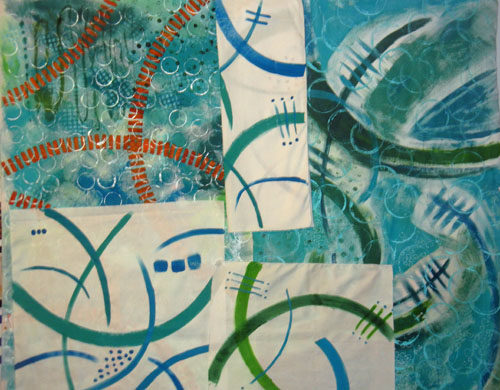
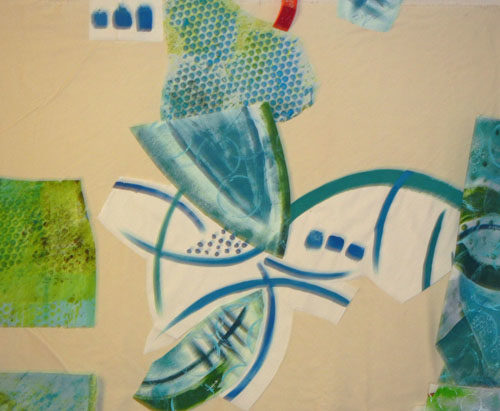
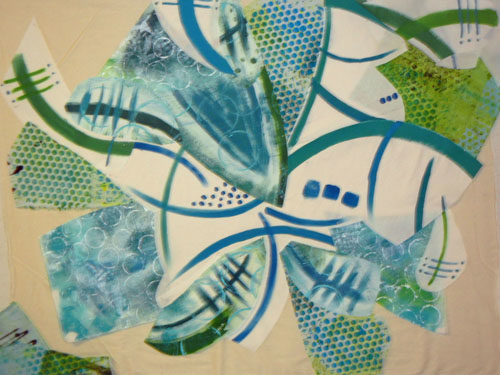
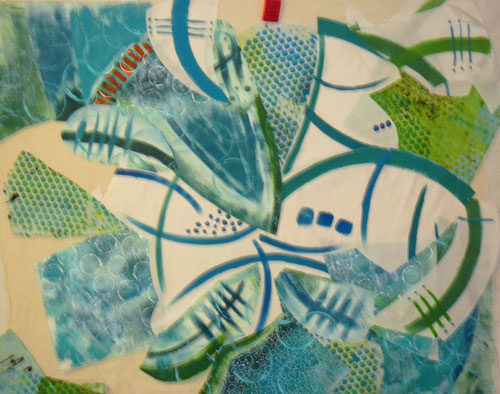
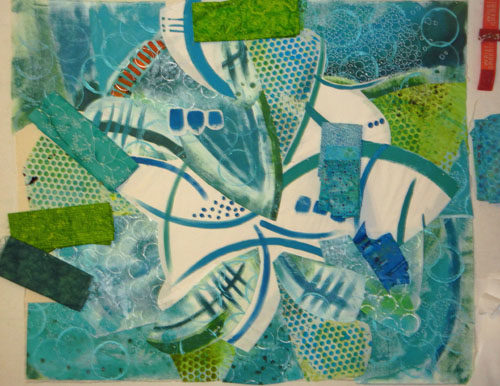
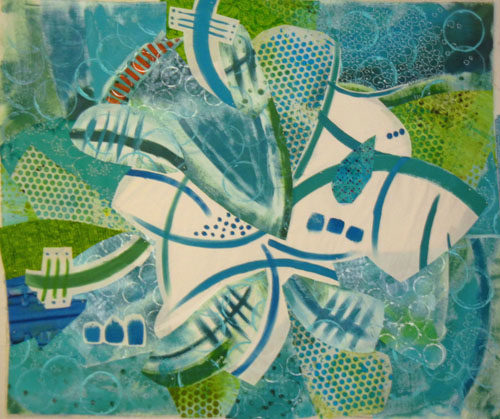
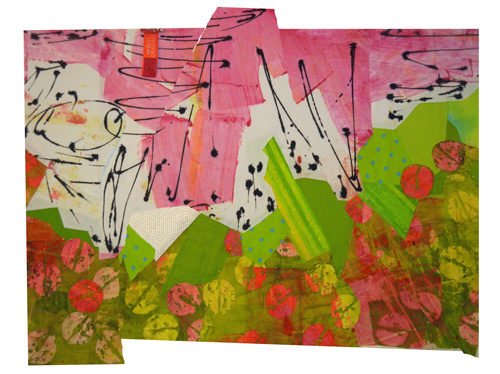
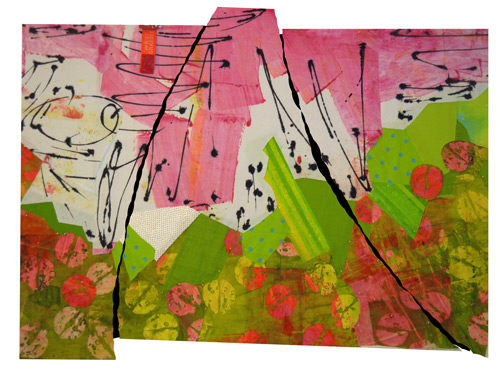
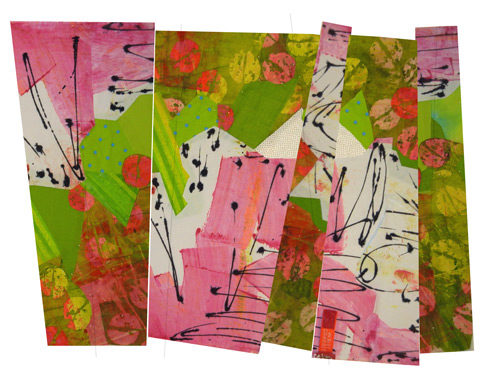
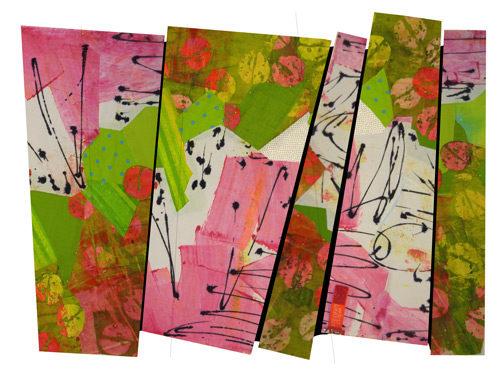
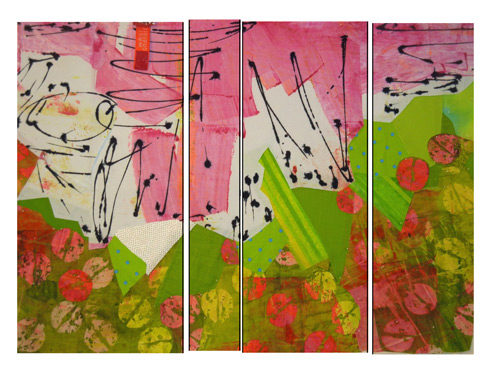 It looked a little boring after some of the earlier arrangements. What if I flipped some of the panels?
It looked a little boring after some of the earlier arrangements. What if I flipped some of the panels?